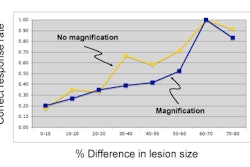SAN ANTONIO - Achieving success with a RIS/PACS network requires appropriate preplanning, navigation of political issues, shrewd vendor evaluation, strong relationship building, sound contracting, and appropriate training, according to a presentation at the Digital Healthcare Information Management Systems (DHIMS) 2008 meeting.
The Utah Valley Radiology Associates (UVRA) in Provo, UT, needed a RIS/PACS mainly for its new imaging center. While it wouldn't be utilized by any of the six hospitals that the group covered, it would be used for teleradiology/nighthawk cases it was reading for some outside rural hospitals, said Dr. Tyler Crawford. He shared the UVRA's experience during a talk Friday at the meeting, which is sponsored by the University of Rochester School of Medicine and Dentistry in Rochester, NY.
From its experience in installing a RIS/PACS, UVRA has learned that installing a system requires a minimum of nine to 12 months of planning time, Crawford said. It's also a good idea to get your most vocal and opinionated team members involved in the process.
"If you're thinking about rolling out a PACS, you want to find those people and make them get invested," he said.
Also, think early about signing on potential PACS partners, as economies of scale can yield cost savings, Crawford said.
In the first step of deciding on a system, sites should determine their RIS/PACS needs. This involves examining your workflow, including: scheduling, technologist workflow, image interpretation workflow, billing, and referring clinician workflow and use, Crawford said. If desired, third-party applications such as 3D-rendering programs and speech recognition also need to be provided for.
It's also important to examine your IT resources, as well as network resources and needs, he said. In addition, institutions need to determine their anticipated storage requirements. A long-term storage and disaster recovery plan should also be developed.
Planning for PACS migration from the beginning is a good idea, ensuring that the vendor's software stores data in a way that allows for migration, Crawford said. Migration costs should also be delineated in writing.
"We hope we never have to change our PACS vendor, but if you don't plan ahead for this, it's just going to be a headache down the road," he said.
Vendor evaluation
When it's time to choose a vendor, it's wise to look initially at the entire spectrum of companies; conferences are a good place to see many vendors, Crawford said. Other good sources of information are references from other groups and Internet resources.
After choosing three or four vendors for a more through evaluation, prospective buyers should visit current users that have a similar work environment; onsite demonstrations don't necessarily lend themselves well to an institution's particular setup, he said.
Workflow is probably the most important issue to consider in planning, and also the most likely cause of installation failures, according to Crawford. Current PACS administrators for different vendors can be key sources for decision-making and future information, as can administrators who may have migrated away from that particular vendor's product.
Other important questions to ask include how the PACS deals with issues such as critical findings, pay for performance, teleradiology/nighthawk reading, mammography workflow, PET fusion, cardiac imaging, real-time ultrasound over the network, digital dashboard functionality, and data storage and management, Crawford said.
In the decision-making process, workflow efficiency should have a higher priority than cost, he said. Sites should look at a five-year cost of ownership in evaluating the financial aspects of the purchase, according to Crawford. This should include all costs for third-party software, anticipated growth, IT/PACS administrators, and network bandwidth.
If PACS partners are involved, prospective purchasers should examine how the various partners will reimburse for PACS expenses, and what outside PACS business might be available to provide some additional revenue, he said.
Contracts allow for the site's needs to be put in writing, including penalties for delay and nonperformance, as well as migration contingencies, Crawford said.
"There's a pretty common acronym about PACS -- that (vendors) promise anything to get the contract signed," he said.
As far as IT and PACS resource needs, purchasers need to ensure that the network is in place. In addition, most RIS/PACS software requires a significant learning curve and needs to be planned for in advance.
"Having good relationships with some other PACS/RIS administrators that use the product is very helpful," Crawford said.
Marketing should be considered, getting early rollout to referring physicians to secure buy-in, he said. Radiologist involvement in this marketing effort is also key.
Be sure to allocate adequate training time after installation, he said. After implementation, Crawford recommends staying connected with the vendor's software developers to be able to effect meaningful PACS changes.
After six months of experience with its RIS/PACS network, UVRA is happy with its vendor choice (DR Systems, San Diego), and the group anticipates significant cost savings, Crawford said. Referring physicians have also been pleased.
UVRA did make some mistakes in the process, including not having the network set up when the vendor was scheduled to install, he said. In addition, some radiologists did not fully understand how workflow would be different with the new system compared with what was in place at the hospitals. However, this was largely resolved with a recent software upgrade, Crawford said.
In other mistakes, the practice skimped too much on training, he said. As the radiologists only used that particular PACS when they rotated to the imaging center, there were some issues with familiarity for some users, he said. Web training from the vendor has helped, however.
By Erik L. Ridley
AuntMinnie.com staff writer
March 31, 2008
Related Reading
Planning eases PACS upgrade woes, vendor changes, March 27, 2008
Effective communication is crucial for radiology department success, March 20, 2008
Using informatics to meet communication challenges, February 7, 2008
High-tech communication tools improve patient care, studies find, December 6, 2007
Developing a cost-effective image QA workflow with PACS, November 21, 2007
Copyright © 2008 AuntMinnie.com



















